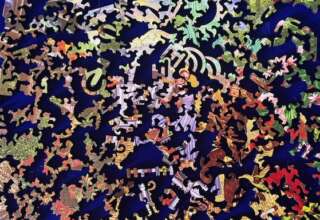
Recent Gatherings
Things began to change dramatically after World War II, with most Americans living in cities or suburbs. While neighborhoods were still important, they often were no longer a setting for comfortable conversations. Neighbors no longer all thought alike or went to the same church. Much more diversity was to be found among people living in close proximity to one another. During the week, men often found their “neighborhood” at the organization where they worked long hours. Women (who were still discouraged from working outside the home) were likely to find “community” in the radio programs they to which they listened every day. They often lived vicariously off the morning “queen for a day” or morning talk shows and the soap operas that filled the afternoon airways. The isolation of women following World War II was notable (though often not noted in contemporary accounts).
Given the increasing diversity of neighborhoods and isolation of many women who were working in the home, urban and suburban residents began to look for gatherings where they could meet with people who shared similar interests and values. Lifestyle enclaves took the place of local neighborhoods (Bellah, and associates, 1985). Weekend gatherings took place among people who shared an interest in topics ranging from antique cars to antique coins. Stamp collectors and history collectors gathered to exchange ideas and information. Bible study groups were formed, and book clubs became popular (especially among the middle class). While women were no longer likely to form sewing circles or quilting bees, they did come together for an afternoon of Bridge or spent time with other women on a weekend sharing receipts or simply commiserating about the toils of childcare and attending to “warn out” husbands (Osherson, 1986).
While the old neighborhoods no longer served as primary locations for the gathering of Americans, there was still the primacy of face-to-face meetings. We see the formation of physical enclaves, such as retirement communities, where people chose to live with other people of the same age, ethnic heritage or even sexual orientation. Gated communities have countered the challenge of diversity, as have planned communities (unless diversity was built into the design of these communities. For teenagers, the new “neighborhood” has frequently become the shopping mall. For older adults with limited income, the new “neighborhood” may have become the local community center—or religious institutions that are still serving local communities.
All of this has changed in recent years—especially following COVID-19. Gatherings are now often virtual. We sit in from of a computer screen or type on a hand-held device when “gathering” with other people. Teenagers have often abandoned the local shopping mall (which is falling victim to online shopping) in favor of Facebook, Twitter or TikTok. Their parents are following suit, with many minutes (even hours) spent interacting with other people via their fingers. Video-based social media is to be found in abundance—whether engaged on a hand-held device or computer screen.
With the emergence (even dominance) of digital communication devices, we are finding that many (perhaps most) gatherings are taking place in virtual space rather than in-person settings. Competitive games take place online rather than at an athletic field. Education takes place on a digital platform, and we can even choose the time when we receive instruction. Even the traditional places where people have gathered to watch a movie or attend a concert have been replaced. We now not only purchase products on-line but also our entertainment. We live in isolation from other people – and often seem to prefer this state of interpersonal relationships.








